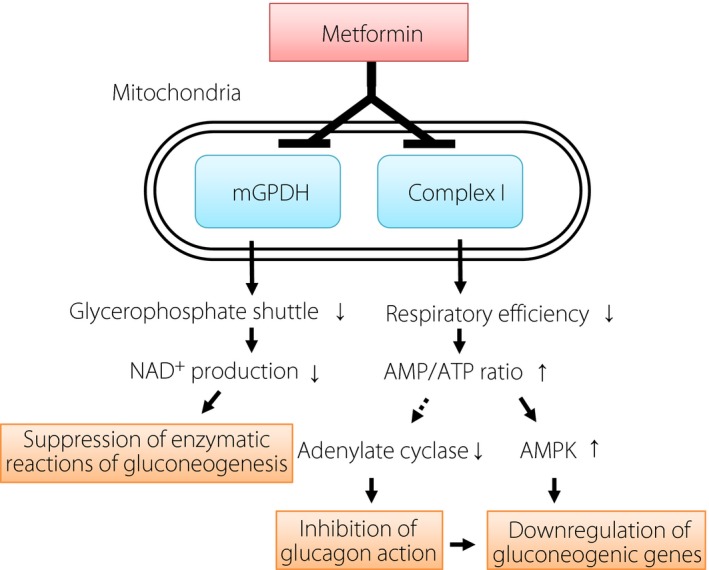Figure 1.

Intracellular targets of metformin and the mechanisms underlying its inhibition of gluconeogenesis. Metformin attenuates mitochondrial respiration through inhibition of respiratory complex I, which results sequentially in an increase in the cellular adenosine monophosphate (AMP) to adenosine triphosphate (ATP) ratio, activation of AMP‐activated protein kinase (AMPK) and suppression of gluconeogenic gene expression. The increase in the cellular AMP concentration likely also inhibits adenylate cyclase activity and thereby suppresses glucagon action. Metformin also inhibits mitochondrial glycerol‐3‐phosphate dehydrogenase (mGPDH) and thereby impairs the production of nicotinamide adenine dinucleotide (NAD +) required for gluconeogenic reactions.
